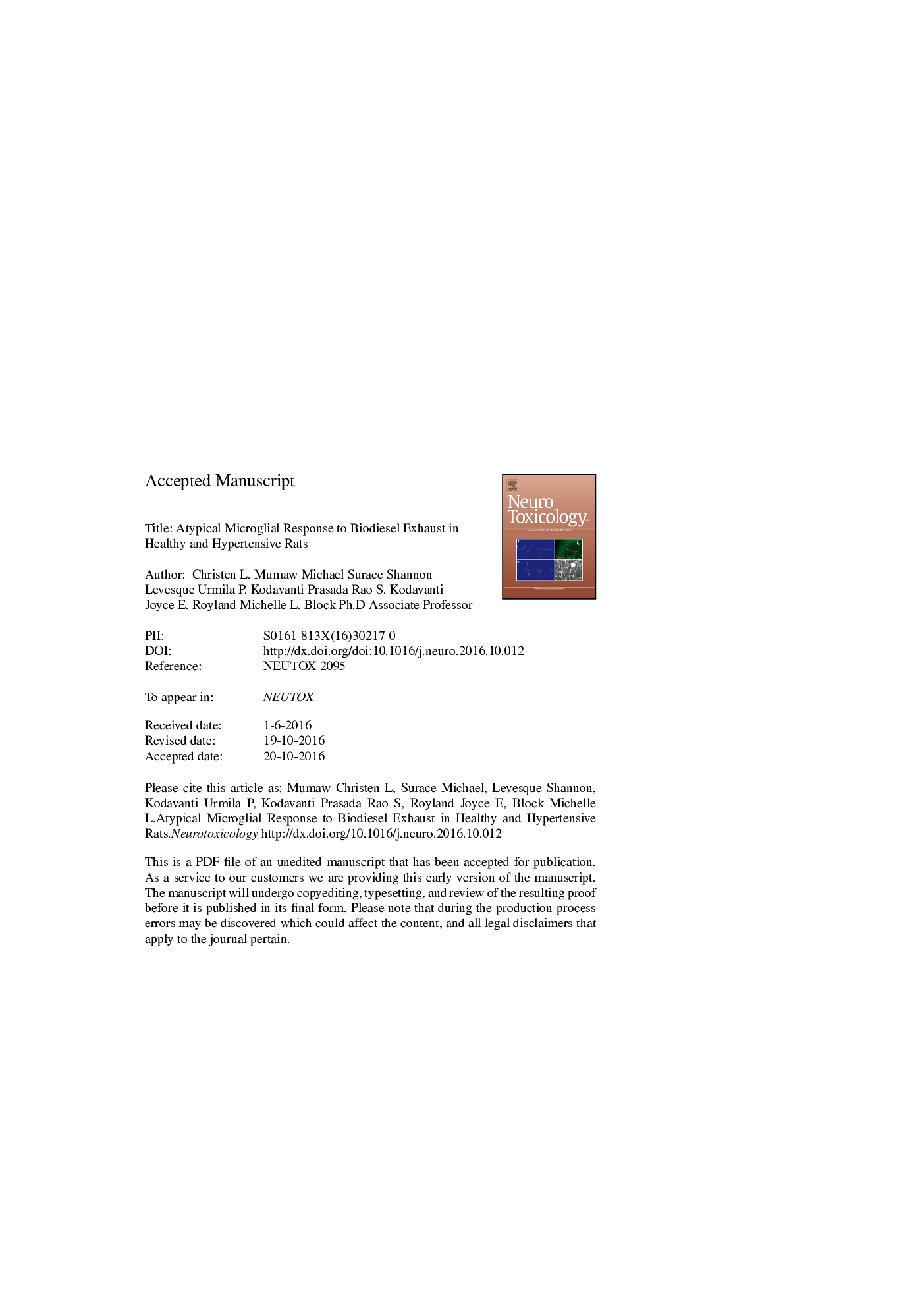| کد مقاله | کد نشریه | سال انتشار | مقاله انگلیسی | نسخه تمام متن |
|---|---|---|---|---|
| 5560953 | 1562035 | 2017 | 25 صفحه PDF | دانلود رایگان |
عنوان انگلیسی مقاله ISI
Atypical microglial response to biodiesel exhaust in healthy and hypertensive rats
ترجمه فارسی عنوان
پاسخ غیر میکرو گلیال بیضوی به اگزوز بیودیزل در موش های سالم و پرفشاری خون
دانلود مقاله + سفارش ترجمه
دانلود مقاله ISI انگلیسی
رایگان برای ایرانیان
کلمات کلیدی
بیودیزل، آلودگی هوا، مغز، میکروگلایا، فعال سازی غیرعادی عصبی عصبی،
موضوعات مرتبط
علوم زیستی و بیوفناوری
علوم محیط زیست
بهداشت، سم شناسی و جهش زایی
چکیده انگلیسی
Accumulating evidence suggests a deleterious role for urban air pollution in central nervous system (CNS) diseases and neurodevelopmental disorders. Microglia, the resident innate immune cells and sentinels in the brain, are a common source of neuroinflammation and are implicated in air pollution-induced CNS effects. While renewable energy, such as soy-based biofuel, is of increasing public interest, there is little information on how soy biofuel may affect the brain, especially in people with preexisting disease conditions. To address this, male spontaneously hypertensive rats (SHR) and normotensive Wistar Kyoto (WKY) rats were exposed to 100% Soy-based Biodiesel Exhaust (100SBDE; 0, 50, 150 and 500 μg/m3) by inhalation, 4 h/day for 4 weeks (5 days/week). Ionized calcium-binding adapter molecule-1 (IBA-1) staining of microglia in the substantia nigra revealed significant changes in morphology with 100SBDE exposure in rats from both genotypes, where SHR were less sensitive. Aconitase activity was inhibited in the frontal cortex and cerebellum of WKY rats exposed to 100SBDE. No consistent changes occurred in pro-inflammatory cytokine expression, nitrated protein, or arginase1 expression in brain regions from either rat strain exposed to 100SBDE. However, while IBA-1 mRNA expression was not modified, CX3CR1 mRNA expression was lower in the striatum of 100SBDE exposed rats regardless of genotype, suggesting a downregulation of the fractalkine receptor on microglia in this brain region. Together, these data indicate that while microglia are detecting and responding to 100SBDE exposure with changes in morphology, there is reduced expression of CX3CR1 regardless of genetic background and the activation response is atypical without traditional inflammatory markers of M1 or M2 activation in the brain.
ناشر
Database: Elsevier - ScienceDirect (ساینس دایرکت)
Journal: NeuroToxicology - Volume 59, March 2017, Pages 155-163
Journal: NeuroToxicology - Volume 59, March 2017, Pages 155-163
نویسندگان
Christen L. Mumaw, Michael Surace, Shannon Levesque, Urmila P. Kodavanti, Prasada Rao S. Kodavanti, Joyce E. Royland, Michelle L. Block,
